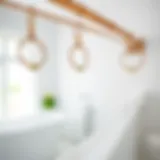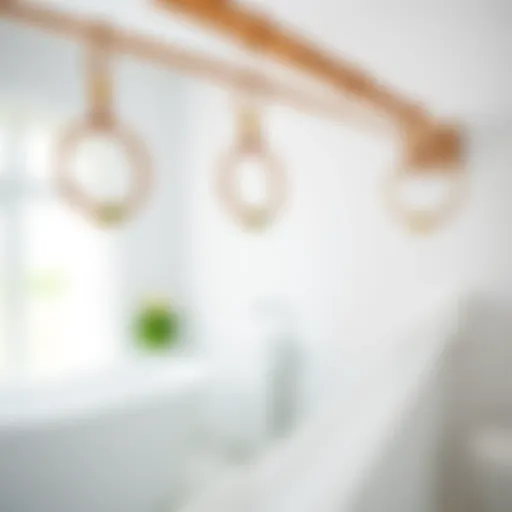Choosing Pendant Lights for a Nine-Foot Kitchen Island
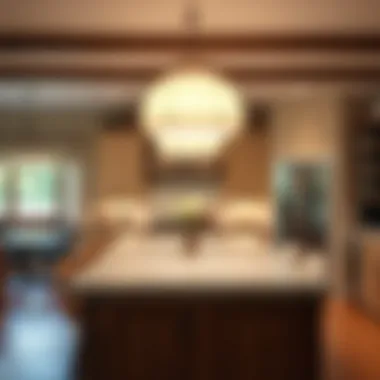
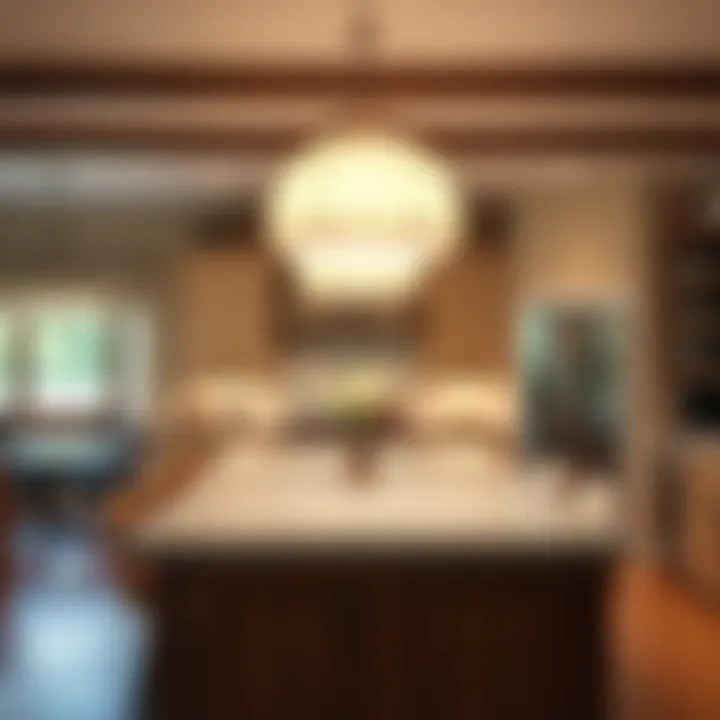
Intro
Choosing the right number of pendant lights for a kitchen island that stretches nine feet long isn't just a matter of picking a pretty shade. It calls for a thoughtful approach that balances aesthetics, functionality, and the unique character of your space. Imagine your kitchen – it's the heart of your home, where meals are cooked, family gathers, and memories are made. The lighting, particularly over a sizable island, plays a crucial role in creating the right atmosphere while catering to various functional needs.
A kitchen island of this scale deserves lighting that isn't just adequate but enhances its presence. Too few pendants can leave the space feeling stark and unwelcoming, while too many can create visual clutter. Several factors come into play when deciding how many fixtures you need – the size and style of the lights, the overall design of your kitchen, and how you plan to use the space. In the following sections, we’ll dissect these elements to help pave your way to a beautifully lit kitchen island.
Understanding Lighting Proportions
When it comes to pendant lights, a golden rule is ensuring that the scale and proportion are on point. This principle doesn’t just apply to the length of the island, but also to the size of the pendants themselves. For a nine-foot island, consider light fixtures that target between 12 to 24 inches in width. This helps maintain a sense of balance and cohesion.
Here's a quick rundown:
- Smaller fixtures (12-16 inches): You might need up to five fixtures, especially if they have an open design.
- Medium fixtures (16-20 inches): Three to four pendants can create a warm, inviting vibe with adequate light coverage.
- Larger fixtures (over 20 inches): A pair would often suffice, creating a bold statement while keeping sightlines clear.
Experimenting with various layouts prior to installation can aid in visualizing how different numbers and styles of pendants interact with the overall design.
Designing with Style in Mind
Your kitchen’s style is another critical piece of the puzzle in determining how many pendants to install. If your kitchen embraces a modern aesthetic, clean lines and geometric shapes may dictate fewer, more substantial fixtures. On the flip side, a traditional kitchen can accommodate more fixtures without clashing the design language. In such cases, vintage or textured glass pendants may enhance the warm coziness of the room. It's all about finding the sweet spot where functionality meets style.
"A light fixture isn't merely a tool to illuminate a room; it should also serve as a decorative element that reflects individual taste and enhances the room's character."
Elements of Layered Lighting
In considering the total light plan for your kitchen island, don’t forget about layering. Pendant lights serve as task lighting, but they should work hand-in-hand with ambient and accent lighting. Think about including recessed lights or under-cabinet lighting to ensure full coverage for daily kitchen activities. The combination of different light sources softens shadows, enhances functionality, and sets a distinct mood, making it crucial to keep a holistic view of your lighting setup.
As you explore the right number of pendants for your needs, visualize how they harmonize with other components, such as your cabinetry, countertop design, and overall kitchen layout.
Practical Tips for Implementation
Now that you have a clearer vision of how to approach your lighting choice, let’s break down some practical tips to guide you:
- Measure your space: Always measure the dimensions of your island and the distance to the ceiling to avoid mismatched proportions.
- Create a mock-up: Use painter's tape to temporarily mark where the pendants will hang. This practice helps you visualize spacing and height.
- Consider bulb types: Selecting the right bulb can enhance the light quality. LEDs are energy-efficient, while incandescent bulbs offer warmth.
Finale
Finding the ideal number of pendant lights for a nine-foot island doesn’t have to be overwhelming. By focusing on proportionality, design coherence, and functionality, you'll arrive at a solution that serves both practical needs and elevates the overall visual appeal of your kitchen. So whether you decide to go bold with fewer, larger pendants or embrace a cluster of smaller lights, remember that the ultimate goal is to create a space that reflects your style while remaining highly functional.
Prelude to Pendant Lighting
When it comes to styling a kitchen, the choice of lighting can make all the difference. Pendant lights have become a favored option as they not only illuminate but also add flair to the space. Their placement above an island, particularly one of a significant length like nine feet, needs careful consideration. Choosing the right number of pendant lights isn't merely about aesthetics; it’s about functionality and creating an inviting atmosphere.
The impact of well-placed pendant lights can transform a standard kitchen into a culinary oasis. They provide task lighting for food preparation while also contributing to the overall mood of the area. Since a kitchen is often considered the heart of the home, making it both beautiful and functional is paramount.
Having enough light is crucial for practical purposes, particularly on large islands where cooking, baking, and homework can all take place simultaneously. It’s essential to strike a balance between style and light output to ensure that the kitchen remains a vibrant, usable space.
For homeowners, designers, and DIY enthusiasts, this discussion about pendant lighting is not just about the fixtures themselves; it’s about how they fit into a broader design scheme. We’ll explore the types of pendant lights, how they serve different roles within kitchen design, and how to figure out the ideal number for an optimal layout.
Understanding pendant lighting is key to creating a kitchen environment that is cohesive and well-designed.
In summary, diving into the world of pendant lighting can reveal an array of possibilities. From style trends to functional needs, each decision adds a layer to the kitchen’s character. This article aims to guide you through these complexities, ensuring that every light placement decision is made with both thought and creativity.
What are Pendant Lights?
Pendant lights are luminaries suspended from the ceiling by a rod, chain, or cable. They come in various shapes, sizes, and materials, making them suitable for nearly any design style. They are typically used in groups or clusters, particularly over kitchen islands, to provide focused lighting. These fixtures serve not just to distribute light but also to augment a space’s aesthetic appeal. Picture sleek, metallic designs paired with rustic settings or elegant glass options illuminating a modern aesthetic.
In a kitchen scenario, the versatility of pendant lights shines. Whether you opt for a trio of small globes or one oversized fixture, the key is to select lights that harmonize with the kitchen’s overall theme. Being able to tailor their selection based on dimensions, heights, and styles enables homeowners and designers alike to create environments that feel cohesive and intentional.
The Role of Pendant Lights in Kitchen Design
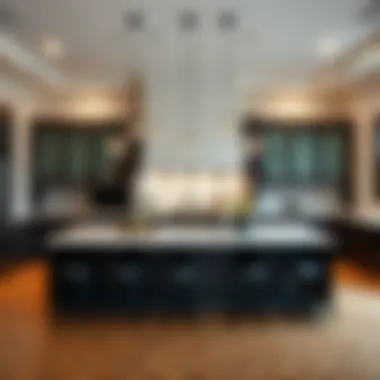
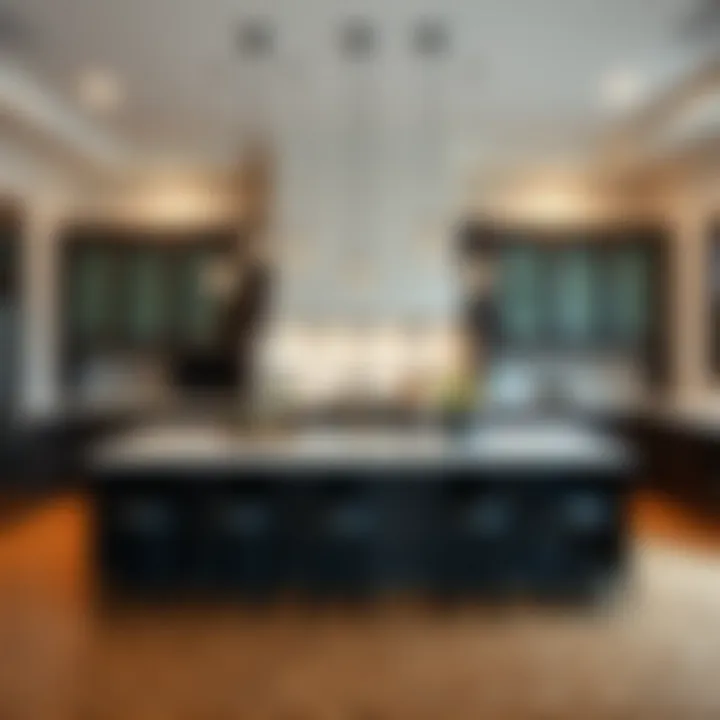
Pendant lights play a vital role in kitchen design beyond mere illumination. They can define spaces, draw the eye, and enhance areas where activities take place. When installed above islands, pendant lights become focal points, often guiding the visual flow of the kitchen layout. They can mix function with flair, offering both practicality in lighting and an artistic edge.
A thoughtfully chosen pendant light can help in several ways:
- Task Lighting: They provide specific illumination for cooking and meal prep, keeping safety and efficiency in mind.
- Visual Balance: Properly scaled fixtures ensure that the island doesn’t feel oversaturated or underwhelmed.
- Design Enhancement: Different styles of pendant lights can complement countertops, cabinetry, and other design elements, providing a harmonious blend.
- Mood Setting: Adjustable lighting options play a significant role in creating ambiance, whether it’s for a casual family dinner or a festive gathering.
Importance of Lighting in Kitchen Spaces
Lighting in a kitchen is about more than simply illuminating the space. It weaves together the functionality and ambiance of the area. When it comes to the kitchen, where culinary magic happens, getting the light right can elevate the entire experience. This becomes even more pronounced with larger features, such as a nine-foot island, which can stand out or blend naturally, depending on how it is lit. Good lighting sets the tone, encourages socialization, and can even enhance the sense of space.
In every corner of the kitchen, light serves multiple purposes. Functional lighting is critical—this type of illumination ensures that food preparation and cooking tasks can be done safely and efficiently. On the flip side, ambient lighting creates a welcoming atmosphere for gatherings, making the kitchen feel like the heart of the home. Understanding this duality is essential for any homeowner, designer, or DIY enthusiast wishing to create an inviting kitchen environment.
Moreover, the importance of lighting transcends mere visibility. Multiple layers of light work together, significantly influencing both the physical layout and the emotional resonance of the space. Choosing the right number of pendant lights over a nine-foot island minimizes shadows while enhancing the design ethos—be it minimalist, rustic, or modern. Each choice contributes to not just what you see, but how you feel in that space.
Functional Lighting vs. Ambient Lighting
When diving deeper into kitchen lighting, it's imperative to discern between functional and ambient lighting. Functional lighting, as the name suggests, is about making sure you can see and perform tasks with ease. Often, this type of light comes from direct sources, like pendant lights, flood lamps, or under-cabinet fixtures. These are positioned to illuminate specific areas such as chopping blocks or stoves, ensuring safety and functionality.
In contrast, ambient lighting is softer and broader. It fills the entire kitchen with light, creating an inviting space without harsh glares. Think of recessed lighting or overhead fixtures that illuminate the entire area without focusing on a single spot. Placing both types of lighting thoughtfully allows homeowners to transition from cooking to socializing seamlessly.
A simple rule to follow—aim for three layers of light in the kitchen: task, ambient, and accent. Task lighting is crucial for those late-night cooking sessions, ambient lighting helps during gatherings, and accent lighting highlights artwork or architectural details. Striking a balance among these types is key for designing a well-lit kitchen.
Impact of Lighting on Mood and Aesthetics
Lighting is a silent influencer, yet its impact is profound. The right lights can completely change the mood in a kitchen. Have you ever walked into a space where the lighting felt off? Perhaps it was too bright and harsh, or maybe it was too dim and dreary. Getting your lighting right not only uplifts the heart of the home but can also transform the aesthetics dramatically.
Warm light, for instance, can evoke coziness and comfort, suitable for family gatherings. Meanwhile, cooler tones may impart a more modern, sharp feel, particularly if paired with sleek surfaces like granite or quartz. Clarity in lighting helps spaces feel larger and more open, while dim lighting can create intimacy, perfect for smaller kitchen settings.
Lighting also plays a role in showcasing colors and textures. When choosing pendant lights, consider the material and finish which can either complement or contrast with existing surfaces. Whether you are drawn to bronze, chrome, or glass pendants, each option brings a unique flair to your kitchen’s overall design.
"Lighting is the most important element in any room’s design. Its impact reaches beyond mere aesthetics to influence mood, perception, and function."
In summary, understanding the layers of lighting—both functional and ambient—is requisite for harnessing the full potential of any kitchen space. This theoretical backbone supports practical implications: how many pendant lights to fit over an island, what heights to hang them, and how those choices will affect not just the illumination but the entire kitchen experience.
Understanding Island Dimensions
When it comes to designing a kitchen, the dimensions of your island play a pivotal role in creating a harmonious space. A nine-foot island, in particular, is no small feat. It not only serves as a hub for culinary activities but also as a social gathering spot. Understanding the specific dimensions allows homeowners and designers to make informed decisions on measures such as lighting, seating, and overall design.
A nine-foot island opens up a world of possibilities, but it can also create challenges in achieving balance. Proper planning here can significantly influence how the kitchen feels and operates. For example, the ample surface area means you might want to consider not just decorative elements but practical aspects, too.
Defining a Nine-Foot Island
A nine-foot island typically measures 108 inches in length, allowing for generous countertop space. This dimension is ideal for various functions, such as food preparation, casual dining, or even working from home. However, dimensions can vary slightly due to design preferences or layout constraints.
It's essential to consider the width and height of the island as well. Standard kitchen islands range from 2 to 4 feet in width, with a height of about 36 inches, which is comfortable for most people to engage in kitchen tasks or enjoy meals.
When defining a nine-foot island, think about:
- Function: Will it primarily serve as a cooking area or a dining table?
- Aesthetics: What role does it play in the overall theme of the kitchen?
- Accessibility: Are the dimensions suitable for traffic flow and ease of movement?
Proportions and Layout Considerations
Once you settle on the dimensions of your island, it's vital to think about proportions and layout. For a nine-foot kitchen island, you want to ensure that the space around it aligns well not just with the pendant lights but with the overall kitchen setup.
- Spacing for Lighting: Pendant lights hung over the island should be proportionate to the island's size. Ideally, for an island of this length, three to five pendant lights can provide sufficient illumination. However, it's essential to space them evenly based on both size and style.
- Seating Arrangement: If you're planning to have bar stools or chairs, you'll want to ensure there's enough room for people to sit comfortably without feeling cramped.
- Flow of Movement: Consider the kitchen work triangle, ensuring all areas—cooktop, sink, and refrigerator—are accessible, while also maintaining a clear path around the island.
In the end, achieving the right proportions and layout for a nine-foot island is about creating a functional and inviting space that meets the needs of your daily life. Taking into account these dimensions helps to set the stage for the subsequent choices in lighting and decor that will ultimately complete your kitchen.
Determining the Number of Pendant Lights
In the grand tapestry of kitchen design, pendant lights often take center stage, particularly when paired with larger islands. The process of determining the right number of pendant lights for a nine-foot island isn’t just a matter of aesthetics—it's a blend of functionality, style, and spatial dynamics. Selecting the right number can influence how the kitchen feels and performs. Too few lights can leave parts of the island dimly lit, while too many can create a cluttered appearance that detracts from the overall design. Therefore, the number of pendant lights becomes crucial for achieving harmony and balance.

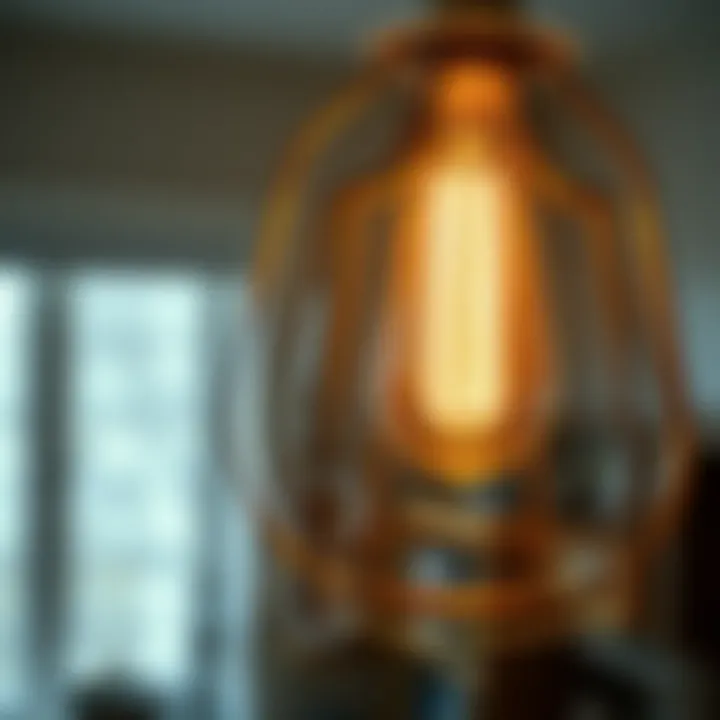
The emphasis on this choice extends beyond mere quantity; it also encompasses the type of light, the design of the fixtures, and how they fit into the broader layout of the space. Let’s dissect the main elements involved in this decision-making process, guiding homeowners and designers through an insightful journey to find that sweet spot of illumination.
Standard Guidelines for Pendant Placement
When setting out to choose pendant lighting, certain standard guidelines can be your best friend. Typically, a common rule of thumb is to hang one pendant light every two to three feet along the length of the island. For a nine-foot island, that generally translates to three to four fixtures depending on their size and design.
However, it’s noteworthy to consider not just the quantity but also the fixture size. Larger pendants, often commanding visual weight, may require spacing them farther apart than smaller ones. A few basic pointers include:
- Size Matters: If you opt for larger fixtures, you might find that two or three is sufficient to achieve adequate brightness without overwhelming the island.
- Height Considerations: The ideal height for hanging pendants usually hovers around 30 to 36 inches above the surface of the island, ensuring they illuminate effectively without obstructing views across the kitchen.
- Symmetry and Alignment: A visually cohesive layout often comes from a symmetrical arrangement. Aligning your pendant lights along the center of the island can create a pleasing visual flow.
"The right number of pendant lights paired with correct spacing can not only enhance functionality but also elevate kitchen aesthetics immensely."
Adjusting for Style and Space
Every kitchen tells its own story through design, and your choice of pendant lights should reflect that narrative. Personal style, kitchen decor, and even the space layout play significant roles in determining how many fixtures to incorporate. For example, in a contemporary open kitchen, sleek pendants can complement the minimalist ethos, possibly justifying the use of fewer lights while still achieving a trendy look. Conversely, a country-style kitchen may function better with more quaint, hanging fixtures, embracing vintage charm.
- Theme Matching: If your island is a focal point of the kitchen, select fixtures that underscore your style, whether that's industrial, rustic, or mid-century modern.
- Consider the Foot Traffic: An island that serves as a bustling area for cooking and entertaining might necessitate multiple lights to ensure every angle is well-lit.
- Colors and Materials: The choice of materials can influence both light distribution and overall vibe. For instance, glass fixtures can diffuse light softly, allowing a subtle illumination that might call for an increased number to maintain brightness.
Testing Light Arrangements
Taking a practical approach by testing light arrangements can lead you to a well-informed decision. Before committing to a final number and configuration of your pendant lights, there are various strategies to ensure you�’re making the right choices:
- Mock Setup: Use painter’s tape on the ceiling to outline where your fixtures will hang. This technique gives a visual representation of space and spacing.
- Dimensional Testing: If possible, utilize temporary lighting solutions to see how different arrangements feel during various times of day. This can provide insight into how shadows and light interact with the space.
- Feedback Loop: Gauge opinions from family or friends about their comfort and preferences regarding light levels in your mock setup. Sometimes, a fresh perspective can highlight what you might overlook.
In summary, determining the appropriate number of pendant lights for your nine-foot island involves a balanced mix of guidelines, style adjustments, and practical testing. Engage with the space, refine your choices, and tailor the illumination to suit your kitchen's unique narrative. Light is more than just a source; it’s an essential element in crafting an inviting and effective kitchen environment.
Fixture Selection Criteria
When you’re in the midst of selecting pendant lights for a kitchen island, especially one stretching nine feet in length, understanding the fixture selection criteria is paramount. It’s not just about aesthetics but also functionality and cohesion within the overall kitchen design. The right choice of fixtures can make or break the ambiance of the space, influencing both the everyday usability and the visual harmony of your kitchen.
Choosing Size and Shape
The dimensions of the pendant fixtures significantly influence their effectiveness. Larger islands typically demand larger or multiple fixtures to maintain proportion. If you opt for a single pendant, it should ideally be substantial enough to serve as a focal point without appearing lost in the open space. Conversely, hanging smaller fixtures might create a more delicate look, but they should be spaced evenly to avoid creating a cluttered or mismatched appearance.
The shape of the pendant also plays a critical role. For example, cylindrical shapes can give a modern touch, while more intricate forms might enhance a traditional style. Consider the height as well; for a nine-foot island, ensure that the pendants hang low enough to illuminate the working area without obstructing views or conversations happening around the island.
Material Considerations
The material of the pendant lights contributes to both the durability and the aesthetic of your kitchen island. Glass, metal, wood, and even some sustainable fabrics are common choices. Each material offers its unique set of vibes—glass can lend a more open feel, while metal brings a touch of industrial chic. Wooden fixtures add warmth and texture, which can be particularly appealing in a rustic kitchen design.
In addition, consider the maintenance associated with different materials. For instance, metal finishes might require occasional polishing, while glass will need regular cleaning to keep them sparkling. It’s wise to choose materials that align not only with your design preferences but also suit your lifestyle and how much upkeep you’re comfortable with.
Style Compatibility with Kitchen Decor
Lastly, it is crucial to assess how the selected fixtures mesh with your existing decor. The style of the pendants should harmonize with other elements in the kitchen, including cabinetry, countertops, and appliances. If your kitchen sports a sleek and modern look, warm, vintage-inspired fixtures may feel out of place. Likewise, if you’ve got an eclectic mix of styles, you may consider playful, mismatched pendants for a unique twist.
“Good design is all about balance; it’s important that your lighting choice doesn’t overshadow the other key elements.”
When selecting fixtures, keep in mind the finish as well—brushed nickel, bronze, or oil-rubbed finishes can have varying impacts on the overall look of your space. Matching or contrasting finishes can either unify or define different areas within your kitchen.
By paying careful attention to size, shape, material, and stylistic compatibility, you can confidently choose pendants that will beautifully illuminate your nine-foot island while enhancing the overall kitchen design.
Installation Best Practices
The installation of pendant lights is a crucial aspect of maximizing their effectiveness in a kitchen. Improperly positioned fixtures can disrupt the flow of the space and diminish both functionality and aesthetics. When it comes to a nine-foot island, getting the installation right can make all the difference in achieving an inviting and well-lit area. A thoughtful approach can enhance the ambiance and practicality of your kitchen, making this part of the process one you shouldn't take lightly.
Height and Spacing Recommendations
When determining the height at which to hang pendant lights, a few guidelines can help sift through the decision-making process. Generally, a good rule of thumb is to position the bottom of the light fixture approximately 28 to 34 inches above the surface of the island. This height provides sufficient illumination and ensures that the lights do not obstruct the view across the counter. However, if your kitchen has high ceilings, you may opt for a higher placement to complement the overall space.
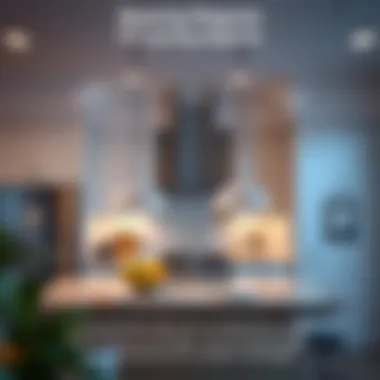
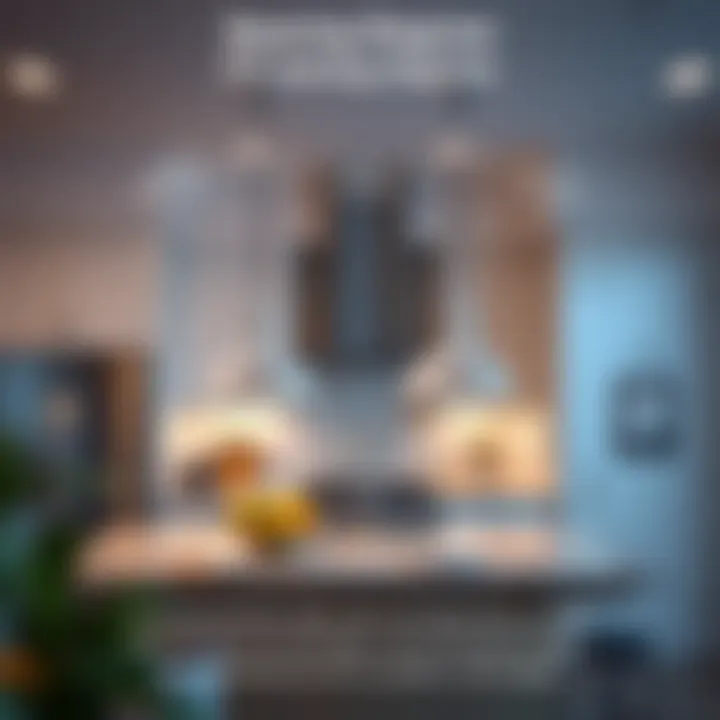
Spacing is another crucial factor. For a nine-foot island, using three or four pendant lights spaced evenly across its length can create a visually pleasing look while providing ample light. To facilitate this, you might consider:
- Three lights placed at approximately 2-3 feet apart, ensuring no gaps disrupt the flow.
- Four lights may need to be spaced no closer than 1.5 to 2 feet apart to avoid a cluttered appearance.
The objective is to achieve a harmonious balance between brightness and design.
It’s wise to simulate light placement before permanently installing the fixtures. Using painter’s tape, mark out where each fixture will hang, and observe how the lighting arrangement affects the space during various times of the day. This practical exercise provides helpful insight into how the lights interact with other elements in the kitchen.
Wiring and Electrical Considerations
Before diving into the installation, ensuring that the wiring and electrical setups are properly considered is paramount. Pendant lights require adequate wattage and circuit consideration to function efficiently. The existing electrical circuit should support the number of fixtures you plan to install, which means calculating the total wattage. A licensed electrician can help determine if your current setup is sufficient or if modifications are necessary.
Additionally, running wiring will be integral. Here are some points worth considering:
- Accessibility: Ensure that the wiring is easy to reach for any future maintenance. Avoid burying wires behind walls or in hard-to-access locations.
- Circuit Load: Your lights shouldn’t exceed the load limit of the circuit. Consider adding balances for heavy load spaces, ensuring everything’s safe.
- Local Codes: Always check local building codes or consult professionals to comply with safety regulations regarding electrical installations. This not only ensures safety but may also prevent potential problems down the road.
Remember, lighting should not just be a matter of aesthetics but also of safety and functionality in the kitchen. The right installation practices set the stage for a space that works beautifully and efficiently.
"Proper installation of pendant lights can transform a kitchen, offering vision and warmth while maintaining a safe environment for cooking and gathering."
By adhering to these best practices in installation, you ensure that your kitchen lighting is not just a decorative feature, but a functional aspect that enhances daily life.
Lighting Trends and Innovations
Staying in tune with current lighting trends and innovations is crucial for anyone considering pendant lights for their kitchen islands. With tastes evolving faster than a cat on a hot tin roof, it’s important to grasp how these changes can enhance your space. Incorporating modern styles not only boosts aesthetics but also improves functionality. In addition, keeping an eye on the latest advances in lighting technology can lead to better energy efficiency and versatility in design.
Contemporary Styles and Materials
When talking about contemporary styles, it’s easy to get lost in a sea of options. There are a few stars in the sky, however, that outshine the rest. One key element in today’s designs is the emphasis on minimalism. Clean lines, geometric shapes, and an understated presence can bring a modern touch that echoes throughout the kitchen.
- Metals with Character: Brushed nickel, matte black, and copper are materials that see a lot of love. Each of these not only adds texture but can also create a striking visual statement. For instance, a brushed nickel pendant casts a soft glow that doesn’t overpower other kitchen elements.
- Clear Glass Shades: Using clear glass shades is a practical choice that allows light to flow freely throughout the space, enhancing the open feel of large kitchens.
Furthermore, organic materials are making their way into the mix as well. Think about incorporating wood elements or woven fibers that bring warmth and a touch of nature indoors.
When choosing fixtures, balance style with function. Consider how each light will complement the overall kitchen design while still serving its primary purpose of illuminating the space effectively.
Smart Lighting Solutions
In this day and age, smart technology is not just a trend; it's a revolution. Smart lighting solutions add convenience and customization to the lighting experience. Homeowners now have the ability to control their kitchen lighting with just a swipe or a voice command.
Here are some smart solutions to consider:
- Dimming Capabilities: Lights that can be dimmed offer flexibility for different occasions — whether you’re hosting a dinner party or simply whipping up a quick breakfast.
- Mobile App Integration: Many modern lights come with apps that allow for scheduling and mood setting, meaning you can have your lights set to "cooking mode" when you step into the kitchen.
- Voice Activation: Imagine being able to adjust your pendant lights while your hands are busy chopping vegetables. Sounds dreamy, right? Smart systems can connect to home assistants like Amazon Alexa or Google Home, making this a breeze.
Adopting smart solutions means not just jumping on a passing trend but investing in a seamless, efficient lifestyle. With these elements in place, your kitchen will feel innovative and fresh, marrying practicality with design beautifully.
Ending
When it comes to pendant lighting for a nine-foot kitchen island, the importance of making informed decisions cannot be overstated. This article has layered insights about determining the ideal number of pendant lights to create a harmonious blend of functionality and aesthetic appeal in your space. The right choice in lighting fixtures not only serves a utilitarian purpose but also acts as a statement piece that can enhance the overall design of your kitchen.
Final Thoughts on Pendant Lighting for Islands
As you explore pendant lighting options for your nine-foot island, remember that balance is key. Too many lights can overwhelm a space, while too few can leave it feeling underwhelming and inadequately lit. Think about how lighting interacts with natural light during the day and other light sources in the evening. The mixture of styles and colors can create unique effects, bringing warmth and comfort to your kitchen.
Additionally, consider the scale and shape of the fixtures. Larger islands often benefit from bolder designs that catch the eye, while simpler, smaller designs might work better for a more understated elegance. Ultimately, the goal is to achieve a cohesive look that reflects your personal style while being practical and functional. For guidance, always go back to the fundamentals of lighting: sufficient illumination, style cohesion, and functional design are the cornerstones of effective kitchen lighting.
Encouraging Personalization in Design Choices
Personalization is not just a buzzword; it’s a crucial part of the design process. When planning your pendant lighting, think about your unique tastes and how they align with the overall kitchen theme. Whether you lean towards industrial styles, rustic charm, or sleek modernism, there’s a broad spectrum to choose from that can cater to your individual aesthetic.
Consider however, that your choices should also comply with the functional needs of the space. For instance, if you often entertain, opt for fixtures that provide ample light without the glare, allowing your guests to move comfortably within the environment. Use lighting intentionally to direct focus to certain areas, such as the cooking zone or the dining space.
By encouraging personal touches and choices that resonate with your lifestyle, you engage actively in the design of your kitchen, transforming it into a space that tells your story. Tailoring your pendant lights not only enhances the visual impact but also fosters a sense of comfort, making your kitchen truly a reflection of you.
"Lighting isn't just about brightness; it's about creating an atmosphere that feels right for your lifestyle."
For further reading on kitchen design and lighting solutions, check out websites like Wikipedia or Britannica. Explore forums on platforms like Reddit to gather insights and personal experiences from fellow homeowners and designers.






